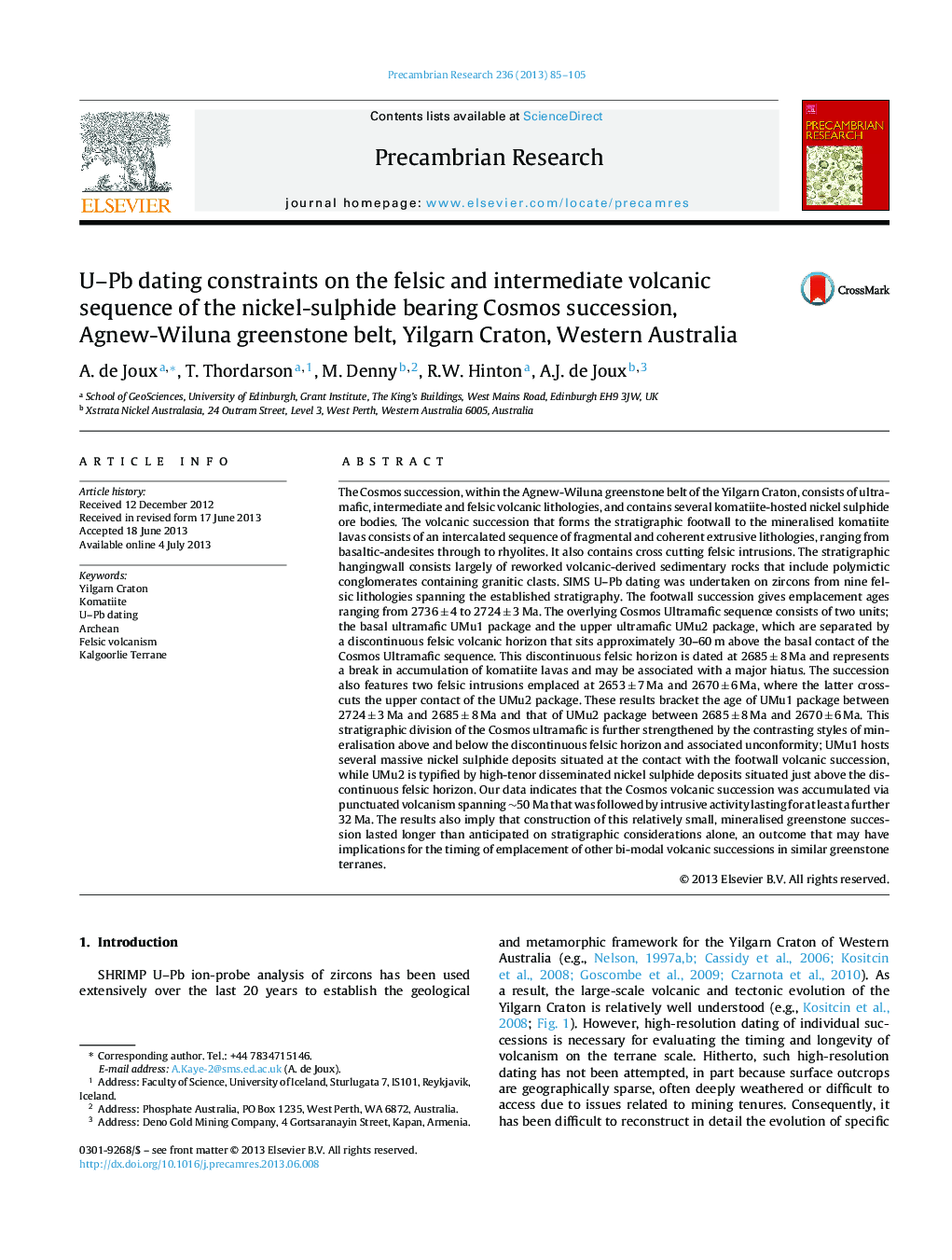| کد مقاله | کد نشریه | سال انتشار | مقاله انگلیسی | نسخه تمام متن |
|---|---|---|---|---|
| 4723167 | 1639638 | 2013 | 21 صفحه PDF | دانلود رایگان |

• High-resolution U–Pb dating is presented for an Archean volcanic arc succession.
• Emplacement of the mineralised Cosmos succession took place between 2736 and 2653 Ma.
• Three cycles of bi-modal, felsic/intermediate-ultramafic volcanism are identified.
• Periodic sub-aerial volcanism, including komatiite emplacement, lasted for >50 Ma.
• Contrasting styles of mineralisation typify komatiites of differing ages.
The Cosmos succession, within the Agnew-Wiluna greenstone belt of the Yilgarn Craton, consists of ultramafic, intermediate and felsic volcanic lithologies, and contains several komatiite-hosted nickel sulphide ore bodies. The volcanic succession that forms the stratigraphic footwall to the mineralised komatiite lavas consists of an intercalated sequence of fragmental and coherent extrusive lithologies, ranging from basaltic-andesites through to rhyolites. It also contains cross cutting felsic intrusions. The stratigraphic hangingwall consists largely of reworked volcanic-derived sedimentary rocks that include polymictic conglomerates containing granitic clasts. SIMS U–Pb dating was undertaken on zircons from nine felsic lithologies spanning the established stratigraphy. The footwall succession gives emplacement ages ranging from 2736 ± 4 to 2724 ± 3 Ma. The overlying Cosmos Ultramafic sequence consists of two units; the basal ultramafic UMu1 package and the upper ultramafic UMu2 package, which are separated by a discontinuous felsic volcanic horizon that sits approximately 30–60 m above the basal contact of the Cosmos Ultramafic sequence. This discontinuous felsic horizon is dated at 2685 ± 8 Ma and represents a break in accumulation of komatiite lavas and may be associated with a major hiatus. The succession also features two felsic intrusions emplaced at 2653 ± 7 Ma and 2670 ± 6 Ma, where the latter cross-cuts the upper contact of the UMu2 package. These results bracket the age of UMu1 package between 2724 ± 3 Ma and 2685 ± 8 Ma and that of UMu2 package between 2685 ± 8 Ma and 2670 ± 6 Ma. This stratigraphic division of the Cosmos ultramafic is further strengthened by the contrasting styles of mineralisation above and below the discontinuous felsic horizon and associated unconformity; UMu1 hosts several massive nickel sulphide deposits situated at the contact with the footwall volcanic succession, while UMu2 is typified by high-tenor disseminated nickel sulphide deposits situated just above the discontinuous felsic horizon. Our data indicates that the Cosmos volcanic succession was accumulated via punctuated volcanism spanning ∼50 Ma that was followed by intrusive activity lasting for at least a further 32 Ma. The results also imply that construction of this relatively small, mineralised greenstone succession lasted longer than anticipated on stratigraphic considerations alone, an outcome that may have implications for the timing of emplacement of other bi-modal volcanic successions in similar greenstone terranes.
Journal: Precambrian Research - Volume 236, October 2013, Pages 85–105